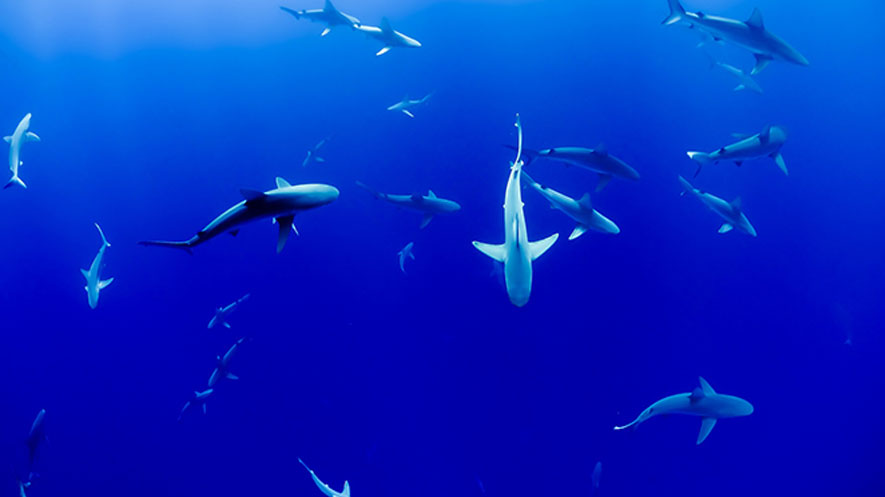Big data shows that large marine vertebrates move differently, but consistently, through coastal and ocean waters.
Whales and turtles have very few similarities - they differ in size, shape, and lifestyle - yet the most extensive collection of movement data for large marine vertebrates reveals that the movement patterns of these two very different species are surprisingly similar.
A team of 58 researchers from nine countries and 45 research institutions has collated a satellite telemetry dataset for a diverse set of large marine megafauna: it includes more than 2.8 million locations from more than 2,600 tracked individual animals. And for some species, it includes data from as long ago as 1985.
Knowing how megafauna moves through coastal and oceanic environments will help marine managers to better understand the impacts of human activities on these animals and identify habitats for conservation, explains Carlos Duarte from KAUST University, study co-author and co-founder of the international collaborative effort, the Marine Megafauna Movement Analytical Program.
The tracked animals included 50 types of marine megafauna that are evolutionarily separated by millions of years and use different modes of locomotion -- they fly, swim, walk or paddle. The team monitored speed and movement of species of turtles, sharks, dolphins, sea lions, whales, and sea birds such as penguins, gulls, and shearwaters.
This enormous and diverse data set can enable scientists to draw conclusions not possible from movement data of a single species. "The major advancement of the results reported come from the possibility to compare not only multiple species of marine animals with different modes of locomotion, but also from exploring variability between individuals within species," explains Duarte. "This confirmed that the remarkably conserved movement patterns, and their flexibility with habitat, apply both when comparing vastly different species, such as turtles and whales, and when comparing individuals using different habitats within a species."
The research team analyzed and extracted features from raw GPS tracking data derived from a tagging program: it involved a total of 321 tagged animals tracked over a decade and mapped the data parameters to the sonic parameters of frequency (pitch) and amplitude (volume). The concept was that each animal traveling within a group would be assigned an instrument, for example a cello, with a different note, and that the distance from the colony would be coded as the pitch of the note. The spread of the group across the ocean will be coded as volume, with the group sounding loud when they were traveling close together.
The study found that movement patterns are primarily determined by the species, but also influenced by the habitat they move through. "In the open ocean, animals tend to move in straighter lines, reflecting the movement to a specific location. While on the coast, they move more erratically, which is consistent with a search behavior, reflecting the animals searching for food and remaining vigilant against predators," says Duarte.
Michael Berumen, another KAUST study co-author, further explains how this information potentially informs conservation. "While animals moving in the open ocean showed a surprising consistency in their movement patterns, animals in coastal habitats have much more plasticity and thus perhaps have greater resilience to human alterations of coastal ecosystems."



